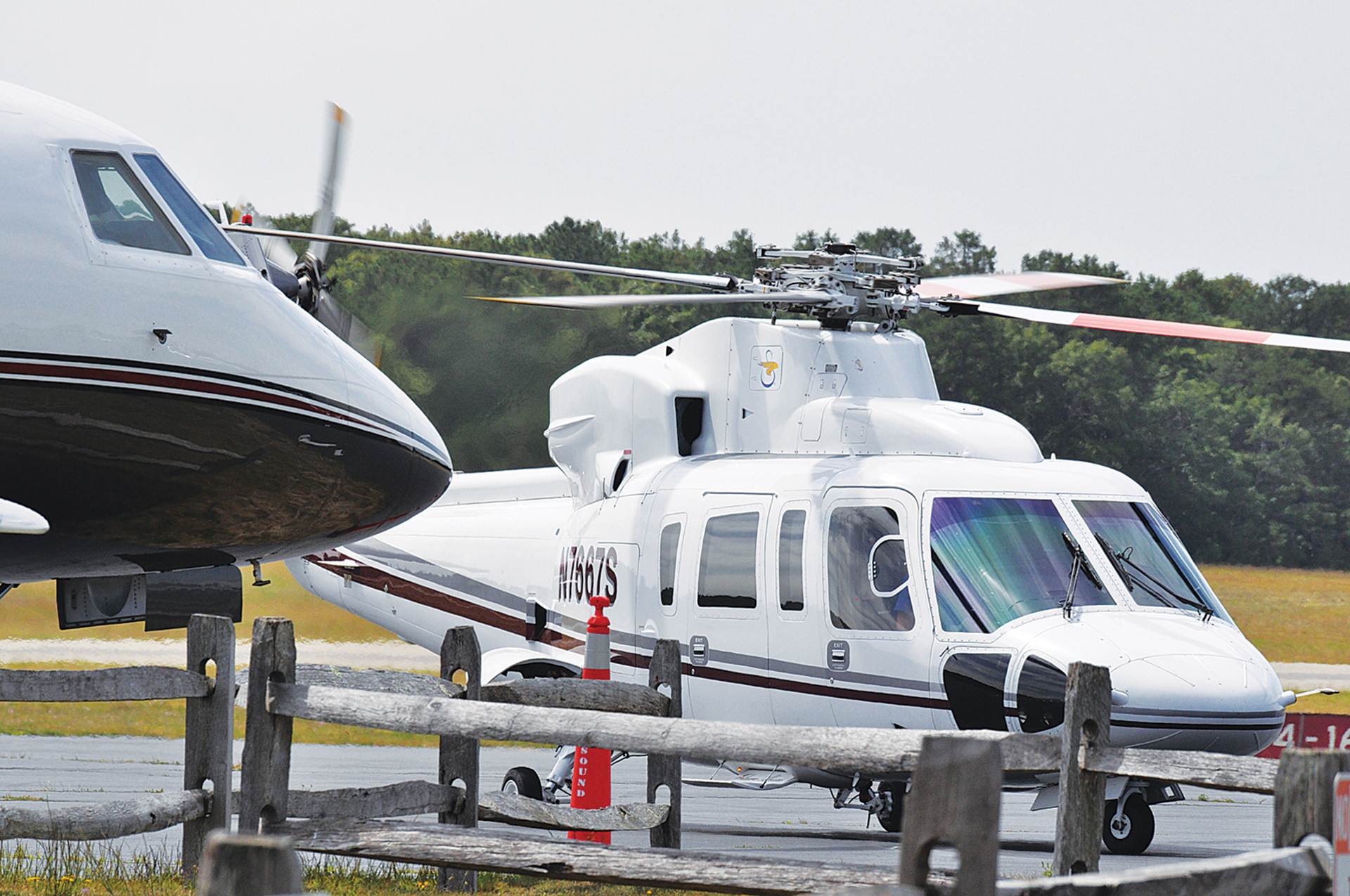FAA Hears Complaints About Helicopters

The message Federal Aviation Administration officials heard was undeniable: Residents of the North Fork have had it with helicopter-generated noise.
The problem is no one else wants to listen to the incessant drone, and that there are residential neighborhoods all around the East Hampton Airport whose residents have said so.
About 100 people showed up at Riverhead Middle School on November 14 to discuss the North Fork route. Congressman Lee Zeldin has been pressuring the FAA to hold hearings on the matter. On October 5, President Trump signed the FAA Reauthorization Act of 2018, which requires the Federal Aviation Administration to reassess the North Shore helicopter route.
The common-sense approach, coming in off the Atlantic, seldom is an actual option: the fog is often thick, and the control tower operators have trouble spotting incoming aircraft, a problem exasperated by the fact the tower is too low to see above the tree line.
“We tweak it all the time,” Jeff Smith, the chairman of the Eastern Region Helicopter Council, told The Independent in a recent interview. “But fog shuts us down. In May, June, and July, we have a cold ocean and hot air.”
That means the helicopters almost exclusively take the northern route, cutting in from Robin’s Island into North Sea/Noyac and following the power lines. Meanwhile, though, jets, prop planes, seaplanes, and the like land from the south side.
The noise situation, especially during the summer, has worsened to the point that some East Hampton Town Board members have said they will seriously consider shutting the airport down. Attempts to negotiate a reasonable solution with the helicopter shuttle companies have been futile, and the courts have thus far failed to deliver a knockout blow to stop the stream of helicopters. “No longer can the FAA ignore the concerns of residents as they have,” Senator Chuck Schumer said. The North Shore route has caused “the day-to-day quality of life to suffer due to the persistent issue of helicopter noise.”
Robert Skinner, a Jamesport resident, said in a letter to this newspaper that he charts the frequency of helicopters passing over his house and they can be as many as 15 in a matter of a half hour.
Former Riverhead Supervisor Sean Walter stressed every municipality has tried to address the noise problem without success. Ultimately only the FAA can change the route but that doesn’t mean it’s more effective.
Like Zeldin and countless other politicians and officials, Schumer has urged alternate helicopter routes, and on occasion they’ve been initiated, but
complaints continued unabated.
“As I have expressed many times to the FAA in the past, I continue to support an all-water North Shore helicopter route that includes an extension of the current route around Orient Point and Shelter Island, as well as an all-water route on the South Shore,” Schumer said. “Further, I encourage the FAA to complete the necessary studies and noise modeling to move forward in reviewing the
alternative and supplemental routes.”
Despite the scores of speakers demanding change and the politicians promoting solutions, the FAA is not bound by law to change the status quo.
Current East Hampton Town Board members are united on the issue: They will consider closing the airport down. “They leave us no recourse,” said David Lys, the newest member of the board.
Town officials are weighing a variety of options under a formal FAA Part 161 study process to curb operations and/or shutter East Hampton Airport altogether. The town board agreed to move forward with the Part 161 process last fall after the U.S. Supreme Court declined to hear the town’s appeal of an earlier ruling against its efforts to impose curfews and other restrictions on “noisy” aircraft. However, the Part 161 process is so costly, only a handful of communities have gone that route, mostly without success.
rmurphy@indyeastend.com



